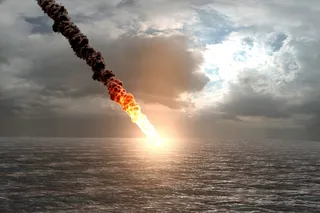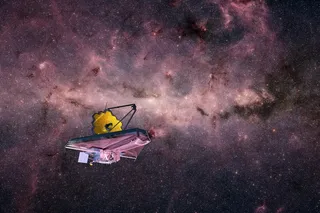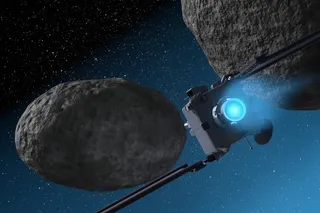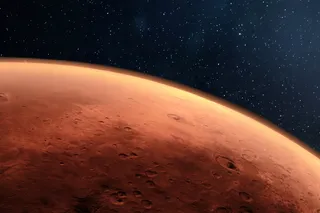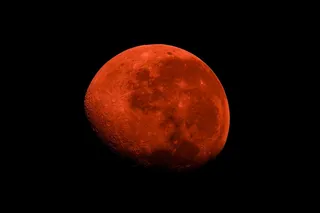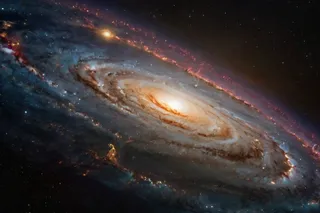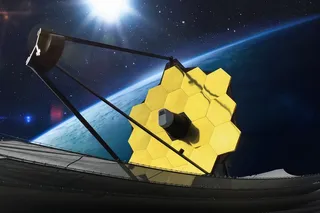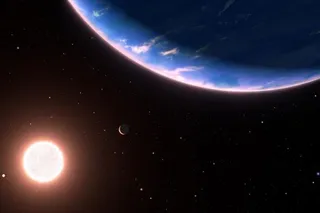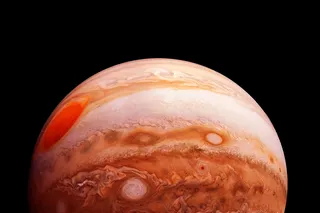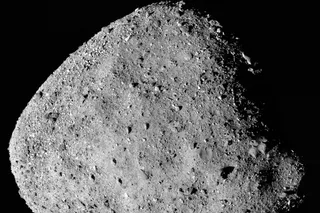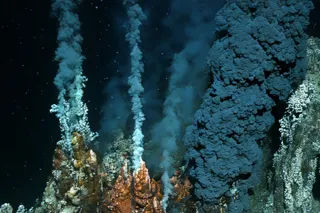We've sent space probes to every planet in our solar system (and if you're a die-hard Pluto fan, you only have to wait 4 more years). And yet there is still much to see, much to explore. Not every world gives up its secrets easily, and perhaps none has been so difficult to probe than Titan, Saturn's largest moon. Bigger than Mercury, second only to Jupiter's Ganymede, Titan has an atmosphere of nitrogen so thick it has twice the Earth's air pressure at its surface. That thick, hazy atmosphere is impenetrable by optical light... but infrared light can pierce that veil, and the Cassini space probe is well-equipped with detectors that can see in that part of that spectrum. And after 7 years, and 78 fly-by passes of the huge moon, there are enough images for scientists to make this amazing global map:
[embed width="610"]http://www.youtube.com/watch?v=8EWlpL4KS34[/embed]
Pretty awesome. And making this animation was a huge effort
. First, not all of the passes were at the same distance, so scientists had to resize the images to match the scale. Cassini passed at different times of day for the local regions, so the sunlight angle changed, making illumination and shadowing different. The atmosphere of Titan is dynamic, changing with time, so again compensations must be made. It's painstaking work, but the results are truly incredible:
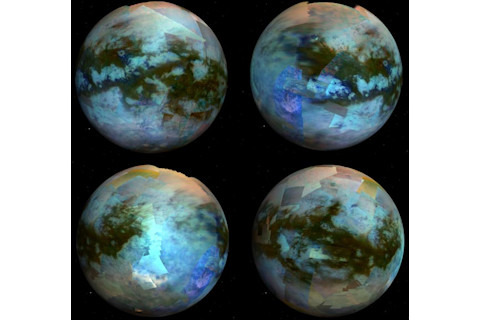
In this false-color map, what's shown as blue is actually light at a wavelength of 1.27 microns -- very roughly twice the wavelength the human eye can detect. Green is 2 microns, and red is 5 microns, well out into the infrared. When the final images are combined, what show up as brown regions near the equator are actually vast dune fields, grains of frozen hydrocarbons rolling across the plains in the relentless Titanian winds. White areas are elevated terrain. Near the north pole, only barely visible, are smudges on the map
that have been shown to be lakes -- literally, giant lakes of liquid methane
! So Titan has air, lakes, and weather. Sound familiar? It's not exactly Earth-like, since the temperature there is roughly -180°C (-300°F), but the similarities are compelling. And Titan is loaded with organic compounds like methane, ethane, and more. A complex chemistry is certainly possible there, but complex enough to have formed life? No one knows. Just a few years ago I don't think anyone would've taken the possibility seriously, but now... well, I wouldn't rule it out. Remember, these maps only show global features, and even though Cassini dropped the Huygens probe
onto the surface, it saw a tiny fraction of what there is to see on this moon, which boasts over 80 million square kilometers of territory. That's a lot of land. What else is there to find there?
[UPDATE: Just to be clear, this is the first global multicolor map of Titan; a map in single color was done in 2009.]
Credit: NASA/JPL/University of Arizona/CNRS/LPGNantes
Related posts: - Lakes on Titan? - A Titanic wink confirms otherwordly lakes - Watch out, Titan! Vader’s onto you! - Titanic slice


